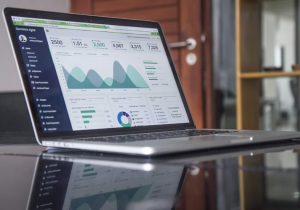Understanding your financial reports improves decision-making and results as it allows you to see the impact of your decisions, and quickly take corrective action.
If you want to know your business numbers, and improve your business decisions, Agilis Books can help.

Understanding your financial reports, or knowing your numbers, is critical to business success. It allows you to make better business decisions, measure the impact of those decisions, take corrective action where necessary and, ultimately, enjoy better results.
By understanding your financial reports you’ll be able to:
-
- Know if your business is growing or shrinking
- Discover trends in your business and be able to respond accordingly
- Compare your actual results to your expectations
- Identify areas of strength and weakness in your business
- Understand the value of your business
- Make better and more informed decision-making
How Can You Maximise Results From Your Reports?
Below, we have six (6) ways you can maximise results from your reports:
1. Ask Yourself – Is The Data “Clean”?
This means that all transactions have been coded correctly and bank statements have been reconciled. Do you have monthly procedures to ensure your data is clean?
2. Inspect What You Expect
You must have goals for your business, or targets you expect to achieve. Inspect your financial reports each month to see if you’re on track to achieve your expected targets.
3. Know Which Reports To Use
Each report tells you a different story. Your Profit and Loss Statement measures your income and expenses; the Balance Sheet measures your assets, liabilities, and net worth.
4. Conduct Both A Horizontal and Vertical Analysis
This means comparing the current period with previous periods (horizontal analysis) and calculating each item as a percentage of a base item (vertical analysis).
For example, comparing this year’s Balance Sheet with last year’s and calculating each expense item as a percentage of Sales on your Profit and Loss Statement.
5. Understand The Difference Between ‘As At’ or “For The Period Ending”.
An ‘as at’ report, such as the Balance Sheet, shows the balances at the end of a specific period. A ‘for the period ending’ report, such as the Profit and Loss Statement, shows the results over a period of time.
6. Choose The Correct Data Range
Ensure you correctly specify the start and end dates for the period you want to measure. Choose a month end date, such as 30 June instead of 15 June, to ensure all income and expenses have been coded and reconciled for the period.
Talk To Agilis Books About Your Businesses Financial Reports
By understanding the fundamentals behind your financial reports, you’ll know more about your numbers and be able to use that information to make better decisions.
Whether you want to grow your business or increase efficiency to free up your time, contact Agilis Books today and we can help you interpret your financial reports and set goals for improvement.
This blog was originally published by The Gap, but has had edits made by Agilis Books for the benefit of our readers.
